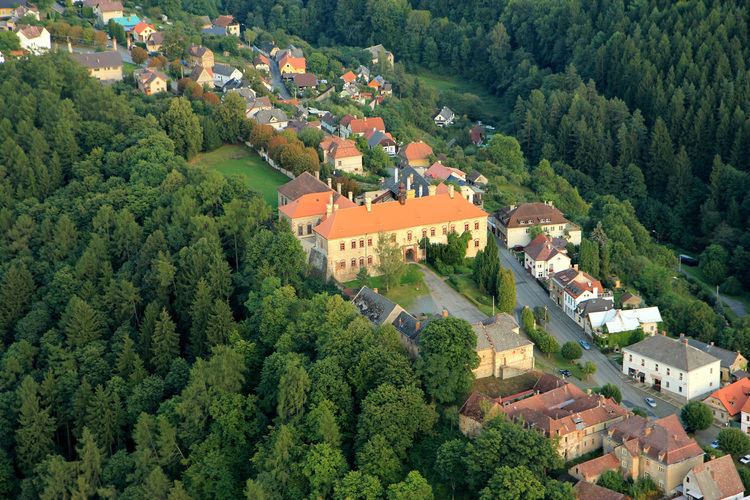- summer (DST) CEST (UTC+2) Area 13.28 km² | Elevation 383 m | |
 | ||
Rataje nad Sázavou (German: Rattay; Ratais an der Sasau) is a market town in the Central Bohemian region, Czech Republic, 27 km southwest from Kutna Hora and 6 km southeast from Sazava. 573 people lived in Rataje in 2006.
Contents
Map of Rataje nad S%C3%A1zavou, Czechia
History
The first written record of Rataje nad Sázavou dates back to 1156. It acknowledges that Rataje existed as a stronghold and market place. There are not any written reports about the exact date of its origin but it was probably about 946.
A castle, partly brick, partly wooden was founded on the place of the current castle in the middle of the 10th century. The castle was built as a border fortress of the Zlic region. This was proved by finding bronze and ceramic ornaments from 1890 when a road around the castle was built.
Rataje was re-built after a large fire in the middle of the 13th century. It was the property of the king at that time. John of Luxembourg gave Rataje to Henry of Lipa. The lords of Lipa also built a lower castle called Pirkštejn. Hynek Ptacek of Lipa and Pirkštejn gained Rataje in 1420. He was the highest hofmeister and münzmeister of the Bohemian kingdom, an administrator of the royal towns including Kutna Hora and a guardian of the future king, Jiri of Podebrady. This is the most important holder of Rataje and is buried in the family tomb in the local church.
Many noble families owned Rataje later on. For example, Ladislav, Vaclav and Jan of Malešice started the reconstruction of the Renaissance part of the chateau in the era from 1531 to 1579. In 1656 William Francis of Talmberk started the reconstruction of the entire chateau and his son Frantisek Maxmilian Leopold finished it. Rataje was held by Liechtenstein family from 1772 to 1919. The municipality of Rataje bought the chateau in 1933 and placed a municipal office, post office, police station and school there.
Although the village once had several hotels these are now (2016) largely closed.
Sights
Famous personalities
Transportation
There are two railway tracks (014 and 212) and four railway stations: Rataje n. Sáz., Rataje n. Sáz. předměstí, Rataje n. Sáz. zastavka, Rataje n. Sáz. Ivaň.
